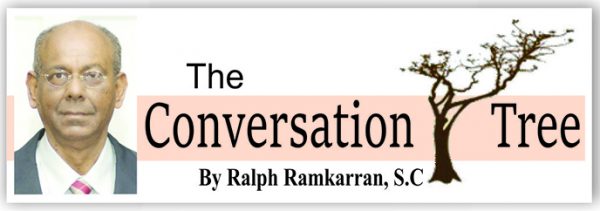 As Guyana’s political season enters its beginning stages, a plethora of new political parties are coming forward to present their programmes to the electorate and seeking its support. While new parties emerging near to election time is not a new phenomenon, the numbers of new entrants to the political scene so far are unprecedented. Yesterday’s news suggest that another party, in addition to the Liberty and Justice Party (LJP), A New and United Guyana (ANUG) and The Citizens Initiative (TCI), and led by two prominent personalities, Messrs. Robert Badal and Nigel Hinds, is likely to be announced later this week. There is at least one other group organizing and preparing to launch a political party.
As Guyana’s political season enters its beginning stages, a plethora of new political parties are coming forward to present their programmes to the electorate and seeking its support. While new parties emerging near to election time is not a new phenomenon, the numbers of new entrants to the political scene so far are unprecedented. Yesterday’s news suggest that another party, in addition to the Liberty and Justice Party (LJP), A New and United Guyana (ANUG) and The Citizens Initiative (TCI), and led by two prominent personalities, Messrs. Robert Badal and Nigel Hinds, is likely to be announced later this week. There is at least one other group organizing and preparing to launch a political party.
The immediate factor which may be responsible for the number of new political parties coming on stream at this time is probably the collapse of the Alliance For Change (AFC), which declined from 10 percent support in the 2011 general elections to 4 percent in the local government elections in 2018, and may have lost some more support since then. These new political parties could not have failed to observe that there is a pool of at least 6 percent of the electorate who may be looking for a political home. It is possible that the potential of attracting this support has been partially responsible for the number of new political parties being introduced to the electorate. It would not have been lost on these new parties that political support of the core Guyanese electorate has long been concretised by ethnic cleavages. Some are relying on the substantial youth vote on the basis that the youth are less motivated by ethnic considerations and more by matters of principle and policy.
But there are other issues at stake. The three newly established political parties, mentioned above, all have promoted as important aspects of their programmes, the matter of constitutional reform. Of the three, ANUG—of which I am the Presidential Candidate—has been the most forthright, setting out its proposals in some detail and describing its proposals for a new governance structure of executive equality, a constituency electoral system with proportionality and a parliament excluding the executive, as its main vision.
The promotion of constitutional reform by the three parties that have been established reflects the importance they attach to the failure of the APNU+AFC administration to implement the constitutional reform proposals that it promised in its manifesto. The public should be reminded that those proposals promised, in effect, a constitutionally mandated national unity government by having separate presidential elections, with the contestant obtaining the highest votes becoming the president, the contestant obtaining the second highest votes becoming the prime minister and with all political parties obtaining more that 30 percent of the votes having a place in the government in proportion to the votes obtained. Had this amendment to the constitution been implemented, a national unity government would have now been in place and the proliferation of third parties would not have been occurring.
Small parties face an uphill task in mounting an electoral challenge. They are required to present a list of candidates comprising 65 members, 30 percent of whom must be women. The list must be supported by the signatures of 300 members of the electorate. As part of the general, not regional elections, in which the ten regions are converted into ‘constituencies,’ of the 10 ‘constituencies’ at least 6, comprising at least 13 members, must be contested. Each list must be supported by the signatures of 120 members of the electorate. In relation to the regional elections, no party is required to contest elections in any region.
These onerous requirements in relation to the general elections strongly militate against the interests of small parties, which will struggle to comply with them. It is the main reason why the number of political parties contesting the elections since the 2006 elections have seen a dramatic decline. The reform of the electoral system is a paramount concern of the new parties, with the main elements being a restoration of the constituency system with a small number of seats remaining for ‘top up’ purposes to maintain proportionality. Currently, the ‘constituencies,’ that is, the ten regions, return 25 members to the National Assembly, while the top up list consists of 40 persons. There is no reason why there should not be 50 to 55 constituencies with a top up list of 10 to 15 members, who would be more than sufficient to maintain proportionality, so that a political party obtains seats in the National Assembly in direct proportion to the percentage of votes that it receives. The APNU+AFC government did not see it fit to implement this urgent and unopposed reform which has been recommended by the Constitution Reform Commission since 1999-2000.
It is to the benefit of the electorate to have a wide choice, presented by the new parties, rather than a restricted ethnic choice, which has been available to them for more than 60 years.









